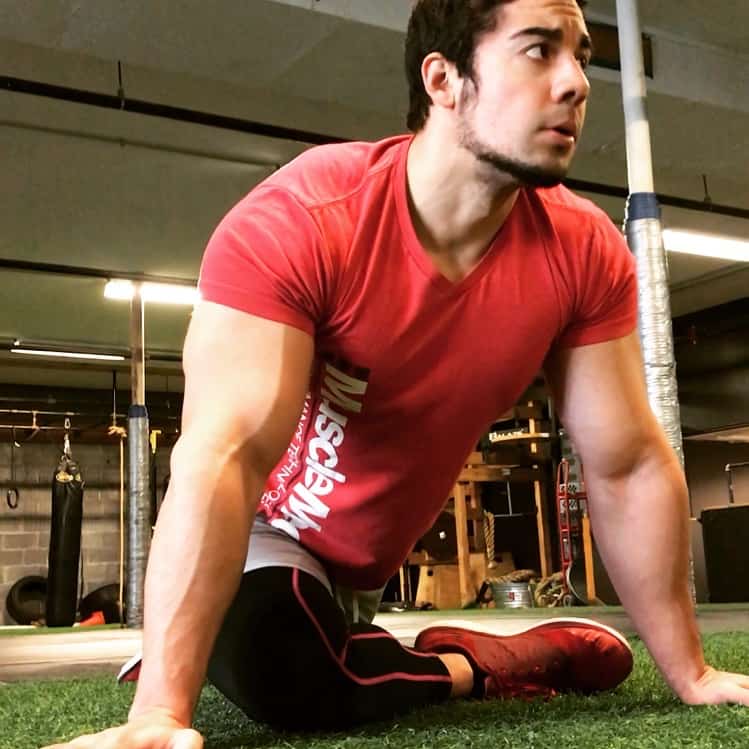
Gym fanatics may find it hard to take rest days, but internally understand that it’s necessary for long-term muscle growth. Rest days allow the mind and body to recover and recharge for the next workout. But there is confusion about what exactly goes on in the body during a rest day.
Many lifters fear that their muscles will wither away on any day in which they are not stimulated from a workout. Luckily this fear is unwarranted.
Muscles do grow on rest days, just as they would on workout days. Muscles constantly go through simultaneous cycles of protein synthesis and protein breakdown. Muscle growth occurs during elevations of protein synthesis, which occur after consuming a high protein meal.
Muscle Growth and Muscle Breakdown
There’s a common misconception about how protein synthesis and protein breakdown occur in the body. Many believe that when one starts the other stops, but they are two independent processes. Protein synthesis and protein breakdown are both occurring at all times at different rates.
If the goal is to build muscle, then you want the rate of protein synthesis to exceed the rate of protein breakdown as often as possible. This is relatively easy to achieve. Whenever you eat a high-protein meal, protein synthesis will be elevated for about 2 to 3 hours.
Consuming 30-40 grams of high-quality protein is usually sufficient enough to achieve this. This is where the myth of ‘you can’t absorb more than 30 grams of protein in a meal’ came from. People confuse the idea of maximization of protein synthesis with overall protein absorption.
If you consume more than 30 grams of protein in a meal, the excess is not wasted. While 30 grams may be near the max to elevate protein synthesis, any additional protein is still absorbed and used for other things. Protein is very important for skin health, tissue health and immune function. Unless you consume a bolus of protein at one time, it is unlikely that much of the protein would ever be wasted.
Workouts are a unique case because they can increase both protein synthesis and protein degradation (breakdown). This is why it’s important to couple workouts with a high protein diet. A high protein diet can not only increase protein synthesis but may also slow down protein degradation.
The anabolic effects of a workout can last quite a while. The length depends on an individual’s level of training. A beginner may experience elevations of protein synthesis for up to 72 hours after a workout. As they progress and become more advanced, that window shrinks to about 24 hours.
How to Maximize Muscle Growth on Rest Days
Now that we know the basics of protein synthesis and protein breakdown, we can structure our diet in a way to maximize muscle growth on rest days. Muscle protein synthesis is capped at a certain point, usually around 30-40g of protein in one sitting. And since the rise and fall of muscle protein synthesis lasts about 3 hours, conventional wisdom would suggest the old bodybuilding model of 6 meals per day.
But the research suggests otherwise. 6 meals per day isn’t bad nor wrong, but may be unnecessary. If an individual has a better chance of adhering to a 6 meal per day diet plan compared to a different plan, they should stick with that. However, research indicates that 4 evenly spaced, high protein meals is adequate to stimulate muscle growth throughout the day.
Assuming an individual gets 8 hours of sleep, this works out to a meal approximately every 4 hours.
Protein Quality
The source of protein is critical when formulating a diet based on maximizing muscle growth. The 30-40g rule is contingent on the food source being a complete protein containing all essential amino acids. There are 9 essential amino acids that cannot be synthesized by the body and must be consumed from food or supplements.
Luckily it’s not hard to find complete protein sources. Chicken, turkey, red meat, eggs, milk, fish, and whey protein are all examples of complete proteins. Odds are these foods are staples in someone’s muscle building diet anyway.
Intermittent Fasting
Is all hope for muscle growth lost for someone on an intermittent fasting diet? No, it’s just not the optimal way of putting on maximum amounts of muscle.
It also depends on how large the eating window is. With a 16/8 style of intermittent fasting, one could easily fit in 3 evenly spaced, high protein meals. The difference between 3 meals and the previously recommended 4 is pretty negligible.
An OMAD diet is a bit more challenging, but this article explains how to maximize muscle growth with a restrictive diet like that.
How Many Rest Days to Take
Rest days depend primarily on an individual’s level of advancement with weightlifting. There are even circumstances where someone may take no rest days. But generally speaking you always want to train more often than you don’t, which means a minimum of 4 days per week.
Enthusiastic lifters, particularly beginners, may want to lift 6 or even 7 days per week. This is not a recommended long term strategy. It’s not because the body can’t handle it; as mentioned a properly structured routine can allow for daily training for advanced trainees. It is simply a strategy to maximize long term muscle gains.
If an individual trains every day from the beginning, they will no doubt put on muscle mass. But eventually the body adapts and plateaus. So then what? By training every day from the beginning, there is no opportunity for growth in the future.
If someone maximized their muscle gains by training 4 days per week, there is still opportunity for growth. Once they plateau, they can now move to 5 days, then 6, and so on.

Active Recovery
Rest days don’t have to mean sitting on the couch all day. There are techniques to enhance recovery on days you don’t train.
The most common form of active recovery is light cardio. A 30 minute treadmill walk on a slight incline will increase blood flow throughout the body. At the same time, it’s not straining enough to cause muscle damage or fatigue. If it’s too strenuous then it’s not a rest day.
Other methods include stretching, light yoga, and massage. Handheld massagers are a great investment for people who don’t have a massage therapist.
Overall, it’s a good idea to keep moving even on a rest day. But there is a balance between getting blood flowing and overdoing it to the extent of defeating the purpose of a rest day in the first place.
